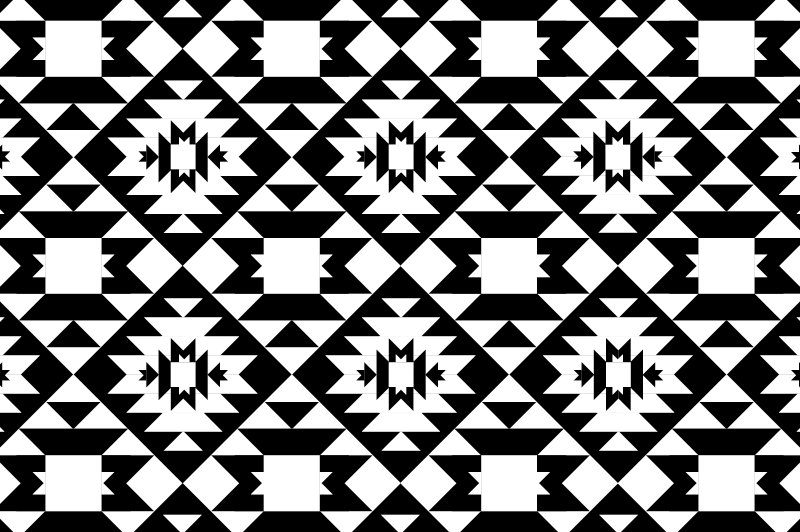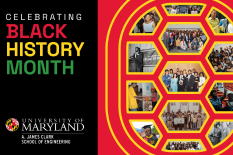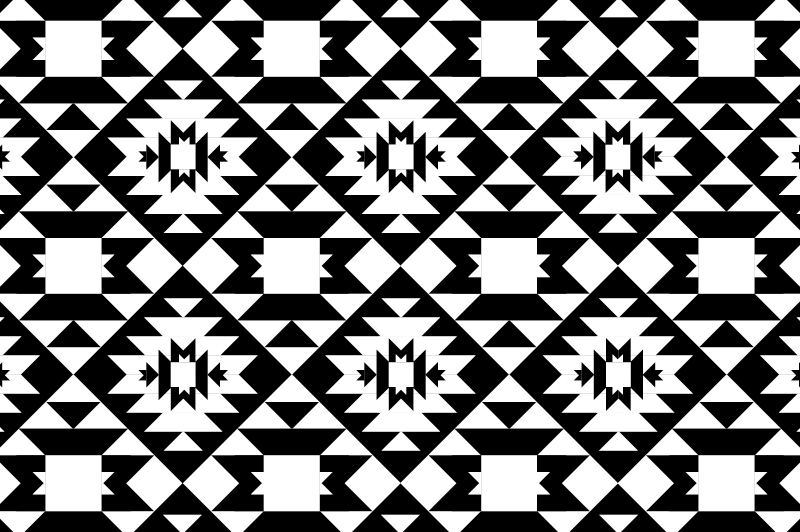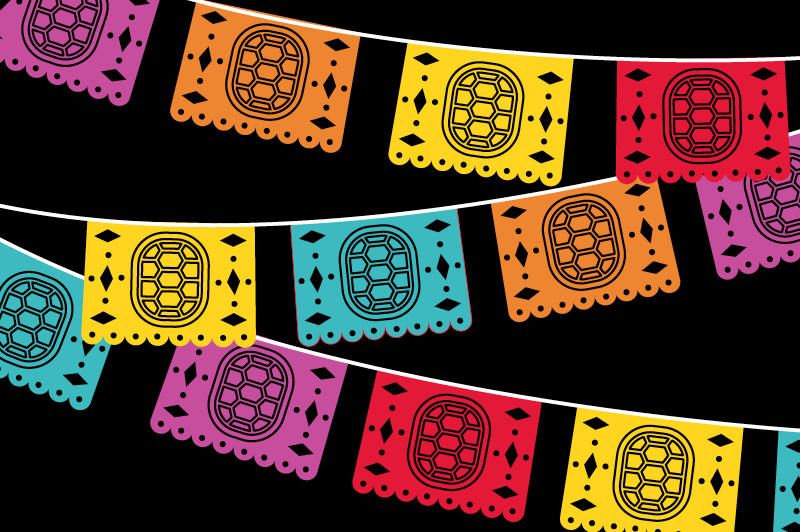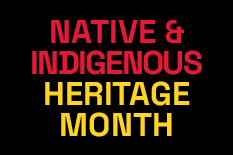News Story
Celebrating APIDA and SWANA Maryland Engineers

Join us this April, as we celebrate Asian, Pacific Islander, Desi American (APIDA) Heritage Month and Southwest Asian and North African (SWANA) Heritage Month. We are proud to highlight the impact made by members of our Maryland engineering community on the UMD campus, the engineering discipline, and our shared future.
Read Dean Graham’s Message for APIDA Heritage Month and SWANA Heritage Month
Please share these and all the stories of our community members, and participate in campus-wide activities: The university’s Office of Multicultural Involvement and Community Advocacy (MICA) coordinates a calendar of events to commemorate Asian, Pacific Islander, Desi American (APIDA) Heritage Month and a calendar of events to commemorate Southwest Asian and North African Heritage Month.
Coming to the U.S. from South Korea at age 15, bioengineering (BIOE) senior Sarang Han surmounted formidable financial and language barriers to become a Clark Scholar and member of the BIOE Undergraduate Honors Program (with her sights set on earning an M.D./Ph.D. after graduation). She hopes to one day work in transplantable tissue engineering, and to help solve the critical donor organ shortage. “This sounds really wild,” says Han, who is currently learning the basic skills of tissue engineering. “But through my education I want to eventually have my own lab and ask research questions to solve this problem.”
Having worked in the lab of Distinguished University Professor and Department Chair John Fisher and in the lab of biomedical engineer Antonios Mikos at Rice University, Han has had a hands-on education in biomaterials and tissue engineering. (Her name appears on four scholarly articles, so far.) For her honors thesis, she is working under Fisher on a project to modulate the stiffness of hydrogel in an engineered in vitroplacenta transwell model to reflect preeclampsia, a serious pregnancy-related hypertensive disorder affecting both the mother and the developing fetus, providing a platform for future research. “What I love about bioengineering is that we’re applying scientific fact to make something to help someone,” Han says.
Outside of her course and lab work, she has advocated for lower-income students at the Maryland General Assembly. As an officer with UMD’s Biomedical Engineering Society, she helped launch K-12 outreach initiatives with Rockledge Elementary School in Prince George’s County and Paul Lawrence Dunbar High School in Baltimore. In addition to the financial stability and great friendships she’s found as a Clark Scholar, she has enjoyed serving as a peer mentor through the program. “Professors and graduated students mentored me, and now I mentor other students,” she said. “It’s a big mentoring cycle.”
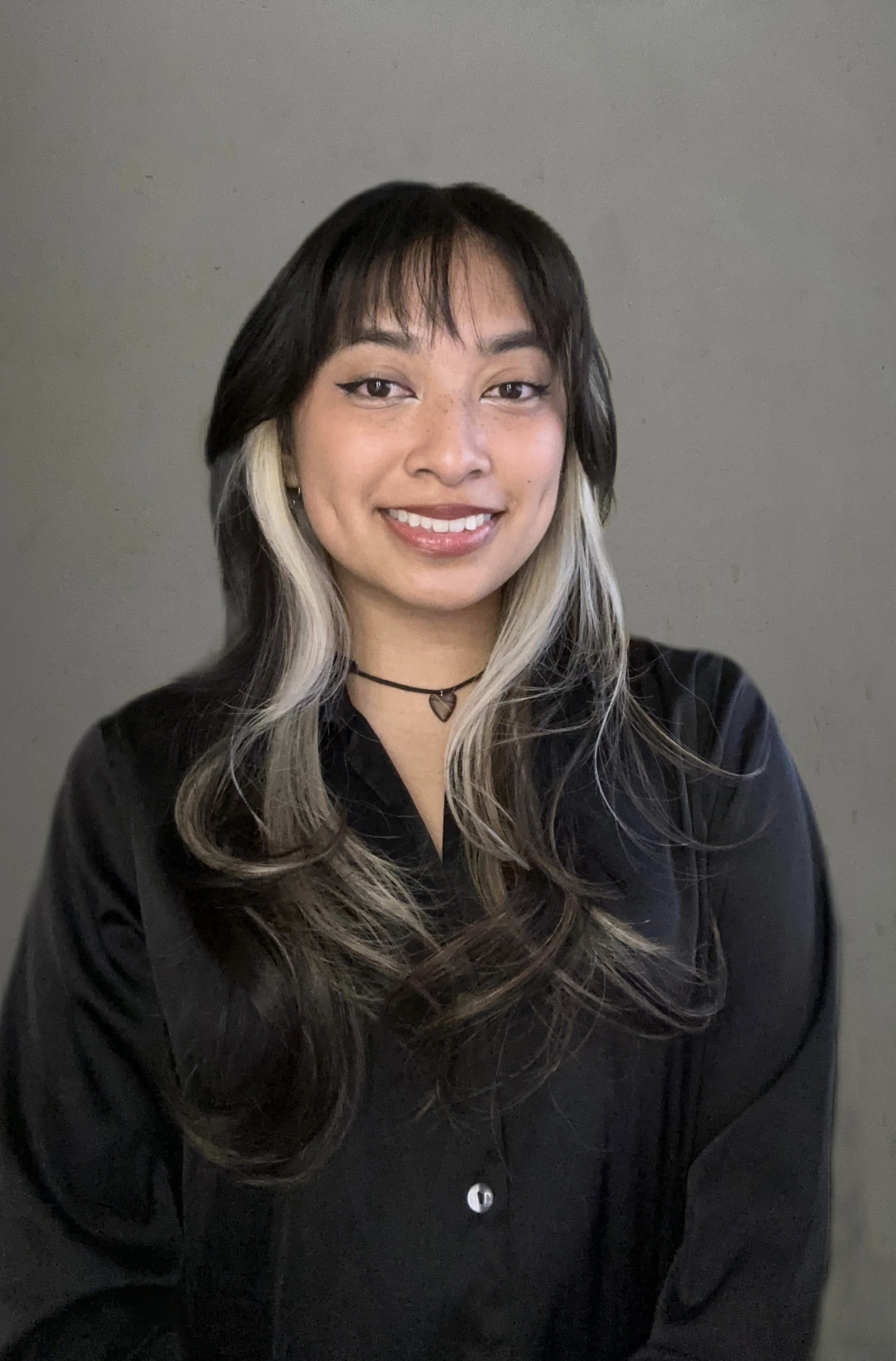
A senior mechanical engineering major at USM at Southern Maryland, Shannon Austria felt destined to become an engineer. The type of kid drawn to Lego and robotics clubs, she enrolled in her high school’s engineering career technology and education program before earning her associate’s degree through the Southern Maryland Engineering Partnership (offered by the College of Southern Maryland in partnership with UMD) and transferring to the Clark School. All the while, she had a very special mentor in her uncle, an engineer with the Navy: He would take Austria to the National Air and Space Museum, feeding her fascination with space, rockets, and all things mechanical. “I knew I wanted to get my hands dirty, and not sit in an office,” she says.
Over the last two years, the Clark School has met her desire for a hands-on education. Last summer, Austria worked an internship at the MATRIX Lab under Assistant Research Scientist Justin Stine, creating microelectronics for BOBs—short for buoyancy-operated bots—for the Maryland Robotics Center. For her part, she designed a new, custom printed circuit board and integrated a dissolved oxygen sensor she created from scratch, increasing her electrical engineering skills. Last semester, she and her senior capstone project team tackled a very real problem in southern Maryland—osprey nests on live power lines. Together the students attached a linear actuator to a large drone to cut each nest in half and push it apart to remove it safely from the lines.“This felt like such a real-world application of our skills,” Austria says of the semester-long project in partnership with the UAS Research and Operations Center. “We had to get flight clearances—it was very official. And seeing our project ‘work’ was cool.”
Looking forward to graduation, Austria plans to continue with engineering as a civilian working for the Navy, like her uncle. She credits her family with cheering her on. “One thing that motivates me is being a first-generation college student of Filipino immigrants,” she says. “Seeing them proud of their kid who got a degree in America? That’s a driving force.”

Chemical and biomolecular engineering (ChBE) senior Adam Morad counts his high school AP chemistry teacher and his mother, who studied chemical engineering as an undergrad, among his role models and inspiration. Since coming to the Clark School he has found another mentor in ChBE Professor and Department Chair Peter Kofinas. For two years, he has conducted research in Kofinas’ lab, developing gel polymer electrolytes for lithium ion batteries with an aim to reduce seepage and flammability and increase battery stability, safety, and performance. In addition to increasing his engineering skills, Morad credits the lab experience with increasing his professional skills—from securing funding to running data for experiments. “I’ve learned how to read research papers, write better, do semester reports,” he says. Another perk? “The lab is like a big family.”
Morad is grateful for his fifth year at UMD that will allow him to earn a minor in computer science. When he’s not in the lab, he is busy with a new passion: coding and taking courses in logic and object-oriented programming—something like arranging puzzle pieces to tell a story. He even finds himself coding for fun. “Learning computer science is like learning a new language,” he says.
The son of Moroccan immigrants, Morad knows a lot about learning new languages. (He speaks four languages, and counting.) Having traveled to Greece through the Clark School’s Office of Global Engineering Leadership, and Iceland twice (once for an internship where he learned more about hydropower and geothermal energy), he hopes to apply his perspectives and his experiences to a career in the renewable energy industry. “I’ve always been interested in renewable grids,” he says. “I’m interested in applying for positions as a battery engineer or a consultant for renewable energy companies—maybe even in Iceland.”

Growing up in Myanmar and belonging to one of the minor ethnic groups called Chin, Center for Environmental Energy Engineering (CEEE) staffer and Maryland Applied Graduate Engineering (MAGE) alum Shwe Htet Htet Aung M.Eng. ’24 (electrical and computer engineering) was a curious child, drawn to futuristic tales and books about outer space. She was also an early adopter of technology; she recalls her first experience with a cell phone that belonged to her aunt. Thirteen-year-old Aung studied the functionality—she couldn’t understand the instructions, which were written in Chinese—and proceeded to develop her own user manual, written in Burmese, for her aunt. Aung went on to study engineering at Myanmar’s Kalay Technological University, where she won second place in a national technology competition for her design of a smart home automation system. “Electronics and the way information is carried have always been interesting to me,” says Aung. “AI and language processing—it is beyond what we can think of. I’m sure our ancestors would be amazed."
In 2022, Aung escaped a military coup in Myanmar with her husband, a U.S. citizen and Marylander, and enrolled in the MAGE program, where her studies focused on communication and signal processing. Among the courses she enjoyed most was an internet of things (IoT) course for which she designed a project to simulate a control system that uses sensors to measure the size of an item pulled along a conveyor belt. For CEEE, Aung was initially hired by Michael Ohadi, Minta Martin Professor, CEEE co-founder, and Advanced Heat Exchanger and Process Intensification (AHXPI) Consortium director, as a part-time graduate student and later as a faculty assistant. In addition to performing the administrative duties to keep the AHXPI Smart and Small Thermal Systems (S2TS) Laboratory running smoothly, Aung is a key member of the lab’s energy audit team, conducting virtual and onsite energy audits—including of state-owned buildings, such as the Maryland State House and the official residence of the governor of Maryland.
With her CEEE contract ending in June, Aung is searching for an engineering job in communications and signal processing. She hopes to one day own a small business increasing sustainability by using IoT. She describes her knowledge and experiences gained at the Clark School as invaluable and is proud to be among a small number of Burmese students who have graduated from MAGE and hopes to serve as an example for others. “I truly enjoyed studying here,” she says. “UMD and the Clark School helped me take my life to the next level.”
Clark Doctoral Fellow and materials science and engineering (MSE) doctoral candidate Meryl Wiratmo developed a passion for nuclear engineering early. Growing up in Monroeville, Pennsylvania, her father has long worked as a nuclear engineer at Westinghouse Electric Corp., but it wasn’t until she found an old resume of his that she learned he had earned a master’s degree in MSE before she was born. With a fascination for radiation, and especially how it affects materials, the lightbulb moment happened to Wiratmo when she visited Penn State University's nuclear reactor on a high school field trip. “When I stared into the blue glow, I thought, this is what I want to study until I die,” she says. “It was in my blood, I guess.”
After receiving her bachelor’s degree in MSE and a minor in chemistry from the University of Central Florida, two major factors enticed Wiratmo to the Clark School: the UMD nuclear reactor and Timothy Koeth, a physicist and MSE assistant professor, and now her adviser. Wiratmo’s main project is working on UMD’s involvement in the Large Hadron Collider experiments at CERN, the European Organization for Nuclear Research, which collides protons and other particles at high speeds to study the fundamental constituents of matter. Co-advised by College of Computer, Mathematical, and Natural Sciences Professor Alice Mignerey, Wiratmo brings her engineering expertise to study how quartz Cherenkov detectors, which are meant to collect light, are darkened and damaged during heavy ion collision experiments. With the main experiments being conducted in Switzerland, Wiratmo uses UMD’s electron linear accelerator. The ultimate goal? To figure out how to prevent the darkening, which leads to reduced signal output, in these experiments that are run so that scientists can analyze quark gluon plasma—a matter formed right after the Big Bang—to better understand the beginning of the universe.
Aside from work in the lab, she and her team enjoy great camaraderie. For their 2024 holiday party, Wiratmo put the good vibes to music with a parody song she composed, titled “The Twelve Days of Koethmas.” A self-professed gregarious extrovert, she appreciates the social aspects of the Clark Doctoral Fellows Program and the Materials Science Graduate Society for helping cultivate interpersonal and interdepartmental connections. As the daughter of immigrants from Indonesia, she says that dealing with her identity as a small Asian woman has accentuated parts of her personality that make her stand out. “That’s been my life, trying to buck all the stereotypes,” she says. Next up? She plans to present her research findings at conferences and would like to go to CERN, “to actually understand the process that my little detector goes through.”
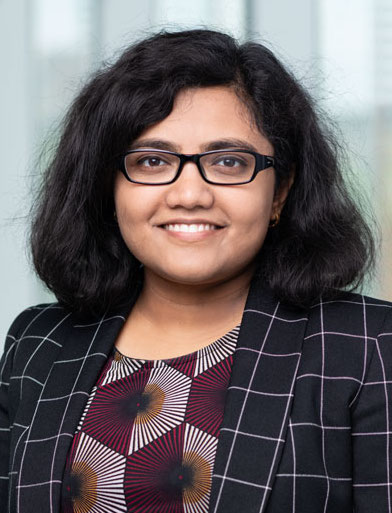
For Sanghamitra Dutta, an assistant professor in electrical and computer engineering (ECE), a love of math sparked her career in engineering. She remembers competing in International Math Olympiad competitions as a high schooler in India—one of few girls to a hundred or more boys. Dutta credits her math teachers and mentors who encouraged her problem-solving skills and passion for any discipline with a mathematical component. During her doctoral program in ECE at Carnegie Mellon University, she became interested in machine learning (ML), particularly in addressing the challenges around explainability, trust, and reliability in ML. Her research has been featured in New Scientist and Montreal AI Ethics Brief, patented in collaboration with IBM, and adopted at JPMorgan.“ The unique angle of my research, which can range from purely theoretical to purely experimental,” she says, “is that I bring in mathematical techniques and foundations, but I like to see them go all the way to application and validation.”
Initially drawn to the Clark School in 2022 as a place to do fundamental research, Dutta has discovered a passion for teaching and advising students. She has taught three sections of Foundations of Machine Learning for undergraduates, receiving the George Corcoran Memorial Award for Faculty for her contributions to teaching and education leadership. For two summers, she has hosted student interns from Montgomery Blair High School, who worked on interrogating large language models by finding failure modes, such as the inability of Chat GPT to solve nuanced riddles. Currently advising four doctoral students, three from ECE and one from computer science, she proudly reports their recent publishing successes at prestigious AI conferences, including the Conference on Neural Information Processing Systems, the International Conference on Machine Learning, and the International Conference on Learning Representations. “When you are working with your first advisee, you are learning about advising as much as they are learning about research,” she says. “After the first publication, you see a whole lot of transformation. The morale and momentum boosts for both of us.”
Having won a prestigious NSF CAREER Award in 2024, Dutta is looking forward to continuing to build the foundations of reliable, efficient, and trustworthy ML and taking them to practice so that AI can truly bring about social good. She is grateful to her colleagues in ECE and the Center for Machine Learning, whom she says are always encouraging. Her current research is focused on the efficiency and sustainability implications of using smaller ML models to replicate the behavior of larger models, better serving resource-constrained environments. “This is a new direction of research bridging explainability with compression that I’m really excited about,” she says.
Meet more members of our community.
Published April 1, 2025



